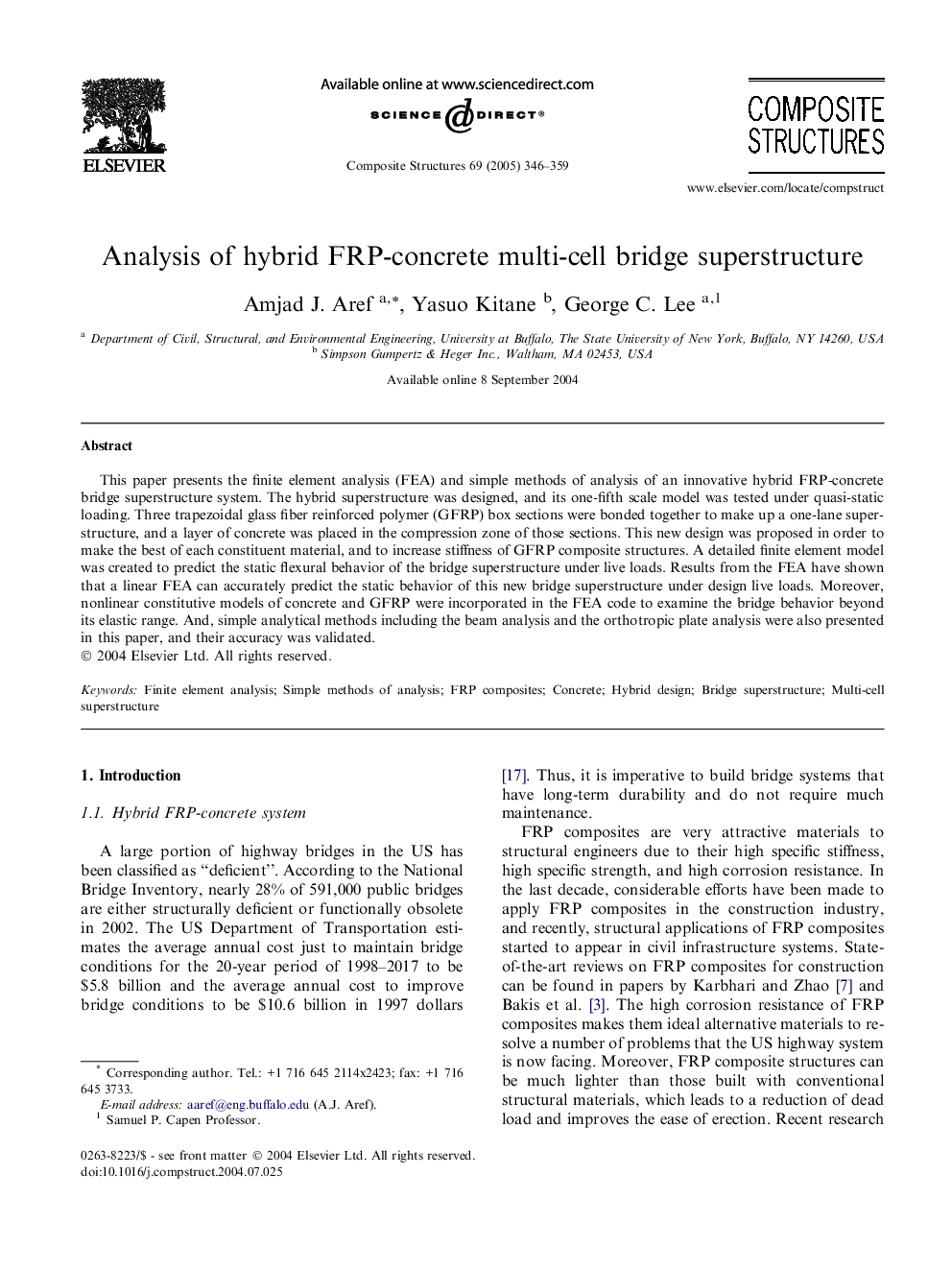| Article ID | Journal | Published Year | Pages | File Type |
|---|---|---|---|---|
| 10283904 | Composite Structures | 2005 | 14 Pages |
Abstract
This paper presents the finite element analysis (FEA) and simple methods of analysis of an innovative hybrid FRP-concrete bridge superstructure system. The hybrid superstructure was designed, and its one-fifth scale model was tested under quasi-static loading. Three trapezoidal glass fiber reinforced polymer (GFRP) box sections were bonded together to make up a one-lane superstructure, and a layer of concrete was placed in the compression zone of those sections. This new design was proposed in order to make the best of each constituent material, and to increase stiffness of GFRP composite structures. A detailed finite element model was created to predict the static flexural behavior of the bridge superstructure under live loads. Results from the FEA have shown that a linear FEA can accurately predict the static behavior of this new bridge superstructure under design live loads. Moreover, nonlinear constitutive models of concrete and GFRP were incorporated in the FEA code to examine the bridge behavior beyond its elastic range. And, simple analytical methods including the beam analysis and the orthotropic plate analysis were also presented in this paper, and their accuracy was validated.
Related Topics
Physical Sciences and Engineering
Engineering
Civil and Structural Engineering
Authors
Amjad J. Aref, Yasuo Kitane, George C. Lee,
